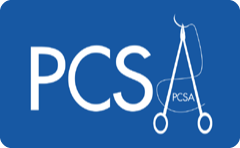 Download this information as a PDF
Download this information as a PDF
Hirsutism (or hirsutes) is the term used for increased hair growth in women. It refers to a male pattern of hair, i.e. in the moustache and beard areas (chin), or occurring more thickly than usual on the limbs. Hirsutism is very common.
There may be hairs on the chest or an extension of pubic hair on to the abdomen and thighs. What is considered normal for a woman, and what is considered hirsute, depends on cultural factors and race.
What is the cause of hirsutism?
Hirsutism is nearly always genetic in origin. Female and male relatives may also have more hair than the average so hirsutism is normal in that family. Unfortunately in our society, to be hirsute is thought unattractive.
The only reason that fashion models appear to have little hair, is that they spend a lot of time and energy removing it.
Although some women with hirsutism have increased amounts of male hormone (eg. testosterone), most have normal levels. The problem in these women is that the hairs are more sensitive than normal to small amounts of hormone. The hairs grow more quickly and thicker in response to it. The increased hair growth is usually first noted in late teenage years and tends to gradually get more severe as the woman gets older.
Investigations
Blood tests may be arranged to evaluate male hormone levels, which could be due to a tumour or overactivity of the pituitary gland, the adrenal gland or the ovary. Other causes of excessive hair and associated medical problems may also need to be evaluated. The tests may include one or more of the following:
- Total and free testosterone
- Sex hormone binding globulin
- Free androgen index
- Dihydroxyepiandrosterone sulfate
- Androstenedione (drawn after 10 a.m.)
If there is also menstrual disorder, additional tests may be requested.
- Luteinizing hormone (LH) and follicle stimulating hormone (FSH)
- Oestradiol, 17-hydroxy progesterone
- Prolactin
Tests may be requested to evaluate other related aspects of health, for example:
- Thyroid function
- Cortisol or overnight dexamethasone test
- Glucose
- Lipids (cholesterol and triglyceride)
A pelvic examination and abodominal / transvaginal ultrasound examination of the ovaries may be necessary as one common cause of hirsutism is polycystic ovaries.
Physical methods of hair removal
Bleaching
Bleaching makes the excessive hair less obvious.
Depilatory creams
Depilatory creams are generally based on thioglycolate (also used in perming solutions). A thick layer is applied for 15-30 minutes to the hairy area, then wiped off and the hair comes off with the cream. Depilatory creams can irritate and cause dermatitis.
Shaving
Shaving, if necessary twice daily, will prevent unsightly stubble. Shaving does not make the hair grow more thickly. Waxing Waxing needs to be repeated every six weeks. The warm wax hardens on the skin and as it is stripped off, the hairs are pulled out with it from the roots.
Electric hair removers
These remove the hair by a combined cut and pull.
Electrolysis/thermolysis
Electrolysis or thermolysis may result in permanent hair loss but it takes time. A small probe is inserted along each hair, and a small electrical or heat discharge destroys the hair. A small area is treated every few weeks. It can be expensive if the area affected is extensive. Unskilled treatment may cause scarring.
Laser therapy
New long wavelength lasers and intense pulsed light are under investigation for the removal of body hair. Time will tell how effective these will be.
Complications of physical methods of hair removal
Folliculitis is an unfortunate risk of plucking, shaving, and waxing. The treated hair follicles become inflamed, and painful pustules may develop. Folliculitis may take weeks to settle. Hair removal has to be stopped, at least temporarily.
Medical Treatment
Hormonal treatment
Hormonal treatment using antiandrogen medicines (which counteract the male hormone) may be used for women with moderate or severe hirsutism. In many cases the hair growth slows down and the hairs become thinner and less noticeable. It takes between six and twelve months to notice much difference, and then the medicine should be continued for several years.
Spironolactone
Spironolactone 50-200 mg daily can slowly reduce excessive hair growth. It is sometimes combined with the oral contraceptive pill. Side effects include tender breasts and irregular menstrual bleeding.
Oral contraceptive
Although several low dose combined pills may be helpful, Diane-35 and Estelle-35 have been specifically formulated to have antiandrogenic activity (i.e. anti-male hormone action). They contains oestrogen and cyproterone. Side effects include spotting (bleeding between periods), tender breasts, nausea and headaches, especially in the first few months. The oral contraceptive pill is not suitable for everyone. Please refer to the New Zealand Ministry of Health (Medsafe) advice on the use of combined oral contraceptives.
Cyproterone
Larger doses of cyproterone i.e. 50-200 mg for 10 days each cycle, are combined with the oral contraceptive pill and are very effective for most women with hirsutism. Side effects include weight gain, depression, and loss of libido. Specialist approval is required for prescription in New Zealand.
Hair removal creams containing eflornithine are available in some countries.














